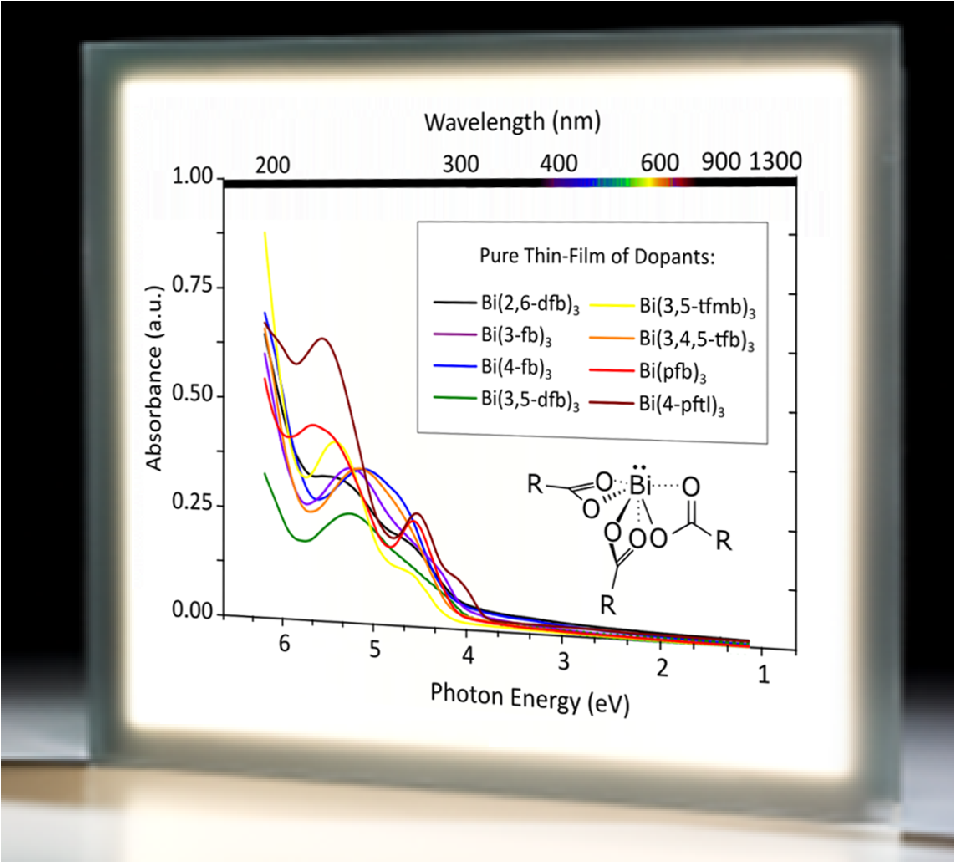









 Abstract: The invention relates to an organic electronic component (100) comprising at least one charge generation layer (5) which has an organically p-doped region (5a) that contains a zinc complex as a p-dopant, said zinc complex in turn containing at least one ligand L of the following structure: formula (I) wherein R1 and R2 can be oxygen, sulphur, selenium, NH or NR4 independently from one another, wherein R4 is selected from the group containing alkyl or aryl and which can be bonded to R3; and wherein R3 is selected from the group containing alkyl, long-chain alkyl, cycloalkyl, halogen alkyl, at least partially halogenated long-chain alkyl, halogen cycloalkyl, aryl, arylene, halogen aryl, heteroaryl, heteroarylene, heterocyclic alkylene, heterocycloalkyl, halogen heteroaryl, alkenyl, halogen alkenyl, alkynyl, halogen alkynyl, ketoaryl, halogen ketoaryl, ketoheteroaryl, ketoalkyl, halogen ketoalkyl, ketoalkenyl, halogen ketoalkenyl, halogen alkyl aryl, and halogen alkyl heteroaryl, wherein, for suitable gr oups, one or a number of non-adjacent CH2 groups can be replaced by -O-, -S-, -NH-, -NR°°°-, -SiR°R°°-, -CO-, -COO-, -COR°OR°°-, -OCO-, -OCO-O-, -SO2-, -S-CO-, -CO-S-, -O-CS-, -CS-O-, -CY1=CY2 or -C≡C- independently from one another, and in such a way that O and/or S atoms are not directly bonded to one another, and are replaced optionally with aryl- or heteroaryl preferably containing between 1 and 30 C atoms (terminal CH3 groups are understood to be CH2 groups in the sense of CH2-H). The invention further relates to the use of a zinc complex as a p-dopant in charge generation layers.
Abstract: The invention relates to an organic electronic component (100) comprising at least one charge generation layer (5) which has an organically p-doped region (5a) that contains a zinc complex as a p-dopant, said zinc complex in turn containing at least one ligand L of the following structure: formula (I) wherein R1 and R2 can be oxygen, sulphur, selenium, NH or NR4 independently from one another, wherein R4 is selected from the group containing alkyl or aryl and which can be bonded to R3; and wherein R3 is selected from the group containing alkyl, long-chain alkyl, cycloalkyl, halogen alkyl, at least partially halogenated long-chain alkyl, halogen cycloalkyl, aryl, arylene, halogen aryl, heteroaryl, heteroarylene, heterocyclic alkylene, heterocycloalkyl, halogen heteroaryl, alkenyl, halogen alkenyl, alkynyl, halogen alkynyl, ketoaryl, halogen ketoaryl, ketoheteroaryl, ketoalkyl, halogen ketoalkyl, ketoalkenyl, halogen ketoalkenyl, halogen alkyl aryl, and halogen alkyl heteroaryl, wherein, for suitable gr oups, one or a number of non-adjacent CH2 groups can be replaced by -O-, -S-, -NH-, -NR°°°-, -SiR°R°°-, -CO-, -COO-, -COR°OR°°-, -OCO-, -OCO-O-, -SO2-, -S-CO-, -CO-S-, -O-CS-, -CS-O-, -CY1=CY2 or -C≡C- independently from one another, and in such a way that O and/or S atoms are not directly bonded to one another, and are replaced optionally with aryl- or heteroaryl preferably containing between 1 and 30 C atoms (terminal CH3 groups are understood to be CH2 groups in the sense of CH2-H). The invention further relates to the use of a zinc complex as a p-dopant in charge generation layers.
Kessler F., Maltenberger A., Pecqueur S., Pentlehner D., Regensburger S., Schmid G.

 Abstract: Ten new efficient p-dopants for conductivity doping of organic semiconductors for OLEDs are identified. The key advantage of the electrophilic tris(carboxylato) bismuth(III) compounds is the unique low absorption of the resulting doped layers which promo tes the efficiency of OLED devices. The combination of these features with their low fabrication cost, volatility, and stability, make these materials very attractive as dopants in organic electronics.
Abstract: Ten new efficient p-dopants for conductivity doping of organic semiconductors for OLEDs are identified. The key advantage of the electrophilic tris(carboxylato) bismuth(III) compounds is the unique low absorption of the resulting doped layers which promo tes the efficiency of OLED devices. The combination of these features with their low fabrication cost, volatility, and stability, make these materials very attractive as dopants in organic electronics.
Pecqueur S., Maltenberger A., Petrukhina M. A., Halik M., Jaeger A., Pentlehner D., Schmid G.*
© 2019-2025 Sébastien Pecqueur